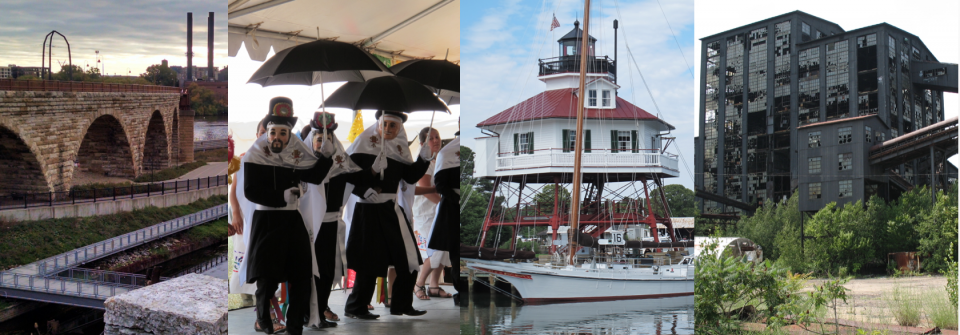Blog
Anthracite Heritage Project Featured on WFMZ News
The Eckley Miner’s Village Excavations, led by Dr. Paul Shackel, Dr. Don Linebaugh, and Kyla Cools, were featured on WFMZ-TV News. Read and watch the news feature: http://www.wfmz.com/news/poconos-coal/history-comes-alive-at-eckley-mine…
UMD – Heritage Lectures
The UMD Heritage Lectures are intended as a broad venue for discussion on the study of past societies and the dynamics of social change, the management of historic resources, the politics of public engagement, and the diverse array of contemporary projects and struggles in which the past becomes mobilized for social, political, economic, and moral purposes.
The Heritage Lectures will be held once a month during the academic year, on Wednesdays starting at 3:00 PM in Woods Hall, Room 1102. Questions may be directed to Dr. Kathryn Lafrenz Samuels (lafrenzs@umd.edu).
Click here to view the complete schedule.
The UMD Heritage Lectures are generously supported by the Department of Anthropology, and the Program in Historic Preservation, School of Architecture, Planning, and Preservation
Anthracite Heritage: Landscape, Memory and The Environment
Dr. Paul Shackel published an article in the Summer 2017 Issue of Open Rivers discussing the Anthracite Heritage.
The full article can be accessed here: http://editions.lib.umn.edu/openrivers/article/anthracite-heritage-lands…
Article Published by Dr. Shackel in International Journal of Heritage Studies.
Dr. Paul Shackel’s article titled, “ The meaning of place in the anthracite region of Northeastern Pennsylvania” was recently published in International Journal of Heritage Studies.
ABSTRACT
The Anthracite Heritage Project was founded to uncover one of the most tragic incidents in US labour history, the Lattimer Massacre. Initially, this work complemented the existing commemorative practices found in the anthracite coal region of Northeastern Pennsylvania. The various communities tend to remember a coal heritage that includes the story of migration, labour and survival. Recently, a new immigrant population has entered the region, and they are facing many of the prejudices and xenophobic fears that the European immigrants faced several generations ago. The history of the Lattimer Massacre, as well as other archaeological work that focuses explicitly on issues of immigration, has enabled the Anthracite Heritage Project to use and expand heritage to confront the racist tendencies found in the established community. The use of bridging social capital is one strategy being used to help better integrate the new population in this economically depressed area of Northern Appalachia.
Paul A. Shackel (2015): The meaning of place in the anthracite region of Northeastern Pennsylvania, International Journal of Heritage Studies.
Eckley Miner’s Village 2016 Media Coverage
Dr. Paul Shackel and Camille Westmont were featured on WNEP News to discuss their findings at Eckley Miner’s Village. The news story highlights the contributions of archaeologists in telling a complete story of the people who used to live there by examining the material culture. Access the full news story and video here. More information about Eckley Miner’s Village site is available here. The Eckley Miner’s Village archaeological field school was also featured on the Standard Speaker. The article underlines using archaeology as a method to understand the life stories of earlier immigrants and miners, particularly in instances where no written records exist. The archaeological remains can indicate a vast amount of details about the roots of the coal industry. Visit the complete news story here.
Theme study on Labor Archeology of the Industrial Era
Michael Roller and Adam Fracchia, recent Ph.D. graduates, produced a theme study on Labor Archeology of the Industrial Era that is now available on the National Park Service website. This project took several years in the making and provides a basic framework of archaeological sites that can contribute to the knowledge of labor during the industrial period.
meat.”
“This theme study is meant to provide a basic framework for the nomination of archeological sites that are nationally significant for their ability to yield or likely to yield information of major scientific importance about labor within the context of the industrial period of United States history, beginning in the late eighteenth century and continuing into the present. National Historic Landmark Criteria reflect a rigorous evaluative framework appropriate for properties possessing the potential to contain information of the highest level of national significance” (Fracchia & Roller 2014). The complete study is available here.






